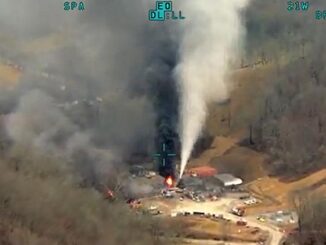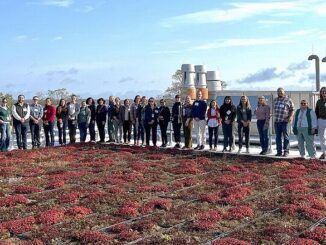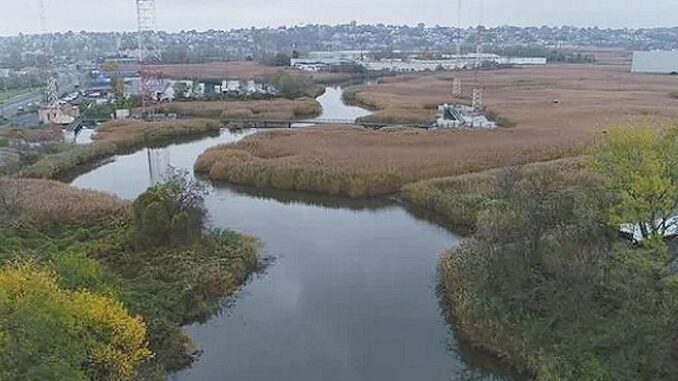
WOOD-RIDGE, New Jersey, October 8, 2025 (ENS) – Decades of contamination with mercury and polychlorinated biphenyl, known as PCB, are now on track to be cleaned up at the Berry’s Creek Study Area adjacent to Wood-Ridge in the Meadowlands of northeastern New Jersey, just 13 miles from New York City.
U.S. Environmental Protection Agency, EPA, has approved a cleanup blueprint for the Berry’s Creek Study Area, which lies between the Passaic and Hackensack rivers and has been called “the most contaminated freshwater stream in the United States.”
The blueprint covers cleanup work to be performed in the tidal creek and surrounding wetlands at the Ventron/Velsicol Superfund site and also at the waterways portion of the nearby Universal Oil Products Superfund site. The two systems are directly connected.
Berry’s Creek is a 6.5-mile tributary to New Jersey’s Hackensack River. The creek originates near Teterboro Airport and meanders through 750 acres of reed marshes, traveling through Carlstadt, East Rutherford, Lyndhurst, Moonachie, Rutherford, Teterboro, and Wood-Ridge.
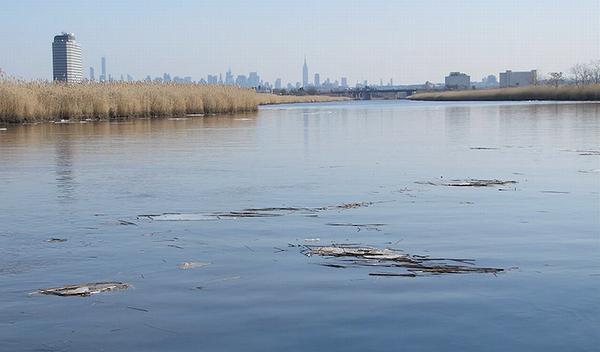
Animals found in and near Berry’s Creek include fish, crabs, turtles, and birds, though mercury contamination is a concern for these and other species in the marshy, estuarine Hackensack Meadowlands ecosystem where the creek is located.
Common species like blue-claw crabs, white perch, and mummichogs are present, as well as more than 260 resident and migrant bird species seen in the Meadowlands area – 33 of which are state-listed as endangered, threatened, or declining. At least 22 mammals, including beaver, mink, seals, shrews, voles, and other rodents, have been documented as well as 51-plus fishes, 51 bee species, and 420 plants.
Fish consumption advisories are in place, meant to help reduce people’s exposure to contaminated fish and crabs.
These contaminants can be damaging or even life threatening; pregnant women and infants are especially vulnerable. Exposure to toxic methyl mercury can cause blindness, deafness, growth problems, lung problems, seizures, impaired mental functioning, even cerebral palsy in the child of a pregnant woman exposed to methylmercury, according to the University of California at San Francisco.
The cleanup blueprint explains how decades of mercury and PCB contamination will be addressed through targeted sediment removal, capping and habitat restoration. The major contaminants in the Berry’s Creek Study Area are toxic mercury, methyl mercury, PCBs, and chromium, which are at high levels in the water and sediment.

EPA expects this cleanup work to begin late in 2026 and take roughly four years to complete.
“Before we can start work on a complex site like this, we have to first complete the extensive engineering design work that serves as a detailed blueprint, so this is a big step toward cleaning up this site,” said EPA Regional Administrator Michael Martucci.
Berry’s Creek has long been subject to state fish consumption advisories due to unsafe mercury and PCB levels. These advisories remain in place until cleanup goals are met, and monitoring confirms conditions have improved.
The areas selected for this cleanup address a major portion of the contamination within Berry’s Creek, which acts as a source of contamination to the other areas of the site, as well as to animal life.
Some cleanup work has already been done. Contaminated soils at nine residential properties and one publicly owned property were removed and replaced with clean fill in the fall of 1990. The cleanup of the first operable unit was completed in 2010. Groundwater use restrictions have been put in place. Deed restrictions limit use to industrial and commercial activities.
The second operable unit, Berry’s Creek Study Area, will be addressed in a phased cleanup approach, focusing first on the areas presenting the greatest risk and acting as a source to other areas. An interim source control action was selected in a September 2018 Record of Decision, and the design of the cleanup plan is ongoing.
“Berry’s Creek has been severely impacted for generations, and this project will finally begin to turn the tide for the community and the environment,” Administrator Martucci said.
The Ventron/Velsicol Superfund site is located in the boroughs of Wood-Ridge and Carlstadt. A mercury processing plant operated at the site from 1929 until 1974. Process waste, containing mercury and other contaminants was disposed of on the 40-acre property and to Berry’s Creek. Soils, groundwater, surface water and sediments are contaminated. Off-site sediments, surface water and biota are also contaminated.
Prior to 1927, most of the site was marshland. In 1929, F.W. Berk and Company, Inc. began operating a processing plant and manufacturing mercury products. Berk continued to operate the plant until 1960, when the corporation dissolved.
Then, Wood Ridge Chemical Corporation, a wholly owned subsidiary of the Velsicol Chemical Corporation, acquired the plant and the property. The mercury processing plant manufactured red oxide of mercury, yellow oxide of mercury, phenyl mercuric acetate, and other organic and inorganic mercury compounds. The plant also reclaimed mercury from both in-house and customer waste products such as amalgams, batteries, thermometers, and impure mercury.
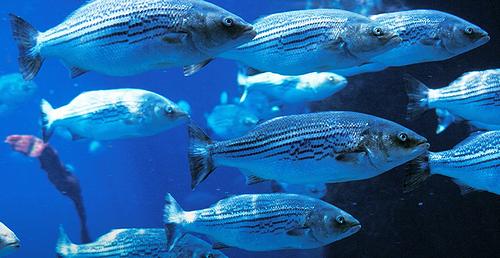
Beginning in the 1970s, the New Jersey Department of Environmental Protection oversaw various investigations of soil, groundwater, surface water, sediment and air quality at the site. After immediate actions to protect human health and the environment, and additional investigations, EPA placed the site on the Superfund program’s National Priorities List in September 1984.
Now, the approved cleanup blueprint, developed by the Berry’s Creek Group of potentially responsible parties under the oversight of the U.S. Environmental Protection Agency, provides crucial details needed to implement cleanup plans that EPA selected in 2018 for the Berry’s Creek Study Area and in 2019 for the Universal Oil Products waterways.
The cleanup will include:
- – Removing contaminated sediment from key areas of the Berry’s Creek Study Area and Universal Oil Products waterways.
- – Installing protective caps to prevent mercury and PCBs from re-entering the water.
- – Replanting marshes and restoring habitat once work is complete.
Berry’s Creek Study Area has also been impacted by two other federal Superfund sites – Universal Oil Products and Scientific Chemical Processing – as well as several hazardous waste sites managed by New Jersey. Mercury, methyl mercury, and PCBs are the primary contaminants found at elevated levels throughout the surface water and sediment as well as animal and plant life in the area.
Featured image: The Berry’s Creek Study Area, BCSA, is part of the Ventron/Velsicol Superfund Site located in Bergen County, New Jersey. undated. (Photo courtesy BCSA Cooperating Potentially Responsible Parties Group)

